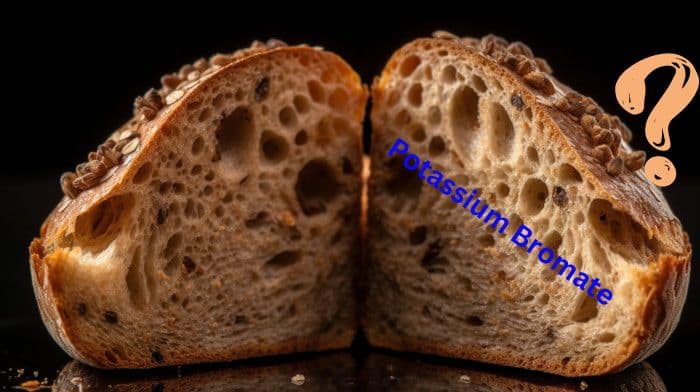Last Updated on July 7, 2024 by Max
Welcome to the Fourth Part of Our Food Safety Series
In this part of our ongoing series on food safety disparities, we delve into Potassium Bromate, a lesser-known yet crucial ingredient in bread making. While it’s a boon for bread’s texture and rise, its health implications are a matter of concern. Join us as we unravel the complex narrative of Potassium Bromate, examining its role in the baking industry and the significant health debates it sparks. Buying a loaf of bread from the store is often taken for granted, but have you ever wondered what goes into making that bread? One ingredient that might surprise you is Potassium Bromate. This chemical compound is a flour improver in the baking industry, strengthening the dough and leading to high-rising bread with a desirable crumb structure (U.S. Food and Drug Administration (FDA), 2018).
However, despite its benefits for bread production, Potassium Bromate has been associated with potential health concerns. Numerous studies, particularly those involving animals, have suggested a link between Potassium Bromate and carcinogenic properties (U.S. Food and Drug Administration (FDA), 2018). The International Agency for Research on Cancer (IARC) classifies Potassium Bromate as a possible human carcinogen based on evidence from animal studies showing an increased incidence of thyroid and kidney tumors (International Agency for Research on Cancer (IARC), 1999).
Given these potential health risks, the European Union has proactively banned Potassium Bromate in food production (European Parliament and Council of the European Union, 2008). Despite this, the compound is still permitted in the U.S., although its use is becoming less common due to public health concerns (U.S. Food and Drug Administration (FDA), 2018).
The narrative around Potassium Bromate illustrates another instance of differing food safety regulations between the EU and the U.S. It underlines the need for consumers to be informed about the ingredients in their food and their potential impacts on health.
This brings us to an important question: Are you aware of what’s in your daily loaf? As we continue to navigate the intricate world of food safety regulations, we welcome your thoughts on this topic.
Conclusion
Our exploration of Potassium Bromate brings to light the stark differences in food safety standards across continents. It’s a call for us, as consumers, to be more vigilant about what we consume daily. What do you think about the ingredients in your everyday bread? How do they affect your choices as a consumer? We invite you to share your insights and join the conversation as we continue to dissect the multifaceted world of food safety.
References
- International Agency for Research on Cancer (IARC). (1999). IARC Monographs on the Evaluation of Carcinogenic Risks to Humans Volume 73: Some Chemicals that Cause Tumours of the Kidney or Urinary Bladder in Rodents and Some Other Substances. Lyon, France: IARC.
- European Parliament and Council of the European Union. (2008). Regulation (EC) No 1333/2008 of the European Parliament and of the Council of 16 December 2008 on food additives. Brussels.
- U.S. Food and Drug Administration (FDA). (2018). Code of Federal Regulations Title 21, Volume 3, Section 137.165 Bromated flour. Washington, D.C.: FDA.
